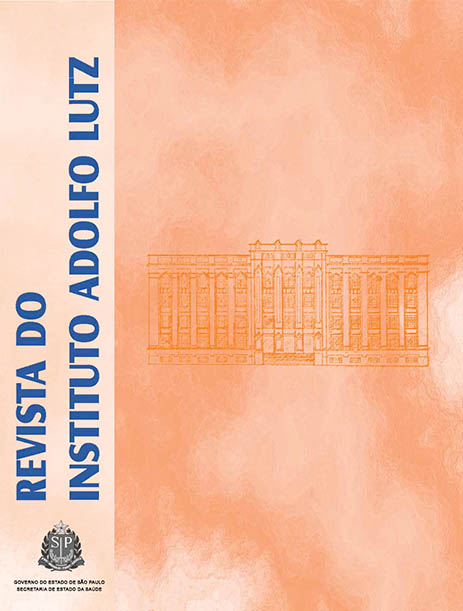Abstract
The effect of cashew nut skin liquid on physicochemical and sensory characteristics of fried and salted cashew nut was evaluated. Proximate composition, caloric value, acidity and pH of nuts were determined. The quantitative descriptive analysis established the attributes to accurately characterize the following sensory characteristics: color, color uniformity, roasted aroma, sweet aroma, rancid aroma, old aroma, crispness, roasted flavor, sweet flavor, rancid flavor, old flavor, salty flavor, bitter flavor and general quality. Samples without stains from the skin liquid showed higher percentages of moisture, ash and protein than the dyed one, whereas the lipid content was higher in stained samples. Stained samples showed highest mean values for bitter flavor and crispness, and the remaining attributes showed no significant differences. The characteristics that positively influenced most the general quality were: color, crispness, roasted flavor, toasted aroma, sweet flavor and salty flavor. All samples showed good sensory acceptance. The frying process followed by salting resulted in good acceptability, and even after this process, the presence of skin liquid reduced the acceptance by causing the most intense bitter flavor. Frying and salting minimized, but did not mask the aftertaste caused by this liquid.References
1. Azam-Ali SH, Judge EC. Small-scale cashew nut processing. Coventry (UK): ITDG Schumacher Centre for Technology and Development Bourton on Dunsmore; 2001.
2. Silva KMB, Almeida FAGA, Silva PSL. Peduncle and fruit yield, in six cropping seasons, of early dwarf Cashew tree clones irrigated with different water regimes. Rev Bras Frutic. 2004;26(3):474-7.
3. Kumar PP, Paramashivappa PJ, Vithayathil PJ, Subra Rao PV, Srinivasa Rao A. Process for isolation of cardanol from technical cashew (Anacardium occidentale) nut shell liquid. J Agric Food Chem.2002;50:4705-8.
4. Mazetto SE, Lomaco D, Mele G. Óleo da castanha de caju: oportunidades e desafios no contexto do desenvolvimento e sustentabilidade industrial. Quím Nova. 2009;32(3): 732-41.
5. Agostini-Costa TS, Jales KA, Oliveira MEB, Garruti DS. Determinação Espectrofotométrica de ácido anacárdico em amêndoas de castanha de caju. Comunicado Técnico 122. Brasília (DF): Embrapa Recursos Genéticos e Biotecnologia; 2005.
6. Edoga MO, Fadipe L, Edoga RN. Extraction of polyphenols from cashew nut shell. Leonardo El. J Pract Technol. 2006;9(1):107-12.
7. American Food Institute – AFI. Specifications for Cashew Kernels – Text. & Appendices, Adopted; 2008.
8. Kemp SE. Application of sensory evaluation in food research. Int J Food Sci Technol. 2008;43(9):1507-11.
9. Moussaoui KA, Varela P. Exploring consumer product profiling techniques and their linkage to a quantitative descriptive analysis. Food Qual Pref. 2010;21:1088–99.
10. Planzer SB, Cruz AG, Hatanaka CL, Mamede PL, Cadena RS, Faria JAF, et al. Sensory profile and acceptance of milk chocolate beverage. Ciênc Tecnol Aliment. 2010;30:391-8.
11. Ribeiro JS, Ferreira MMC, Salva TJG. Chemometric models for the quantitative descriptive sensory analysis of Arabica coffee beverages using near infrared spectroscopy. Talan. 2011;83:1352–8.
12. AOAC. Association Official Analytical Chemistry. Official methods of analysis of the Association Chemistry. 20ª ed. Washington (DC): AOAC; 2002.
13. Brasil. Ministério da Saúde. Agência de Vigilância Sanitária (Anvisa). Métodos Físico-Químicos para Análise de Alimentos. Brasília (DF): Instituto Adolfo Lutz; 2005.
14. Brasil. Ministério da Saúde. Resolução RDC nº 360 de 23 de dezembro de 2003. Aprova o Regulamento Técnico para Rotulagem Nutricional Obrigatória de Alimentos e Bebidas Embalados. Diário Oficial [da] República Federativa do Brasil, Brasília, DF, 26 dez. 2003. Seção I.
15. Meilgaard M, Civille GV, Carr BT. Consumer test and in-house panel acceptance tests. Sensory Evaluation Techniques. Florida: CRC Press Inc; 1988.
16. Ishimoto FY, Harada AI, Branco IG, Conceição WAS, Coutinho MR. Aproveitamento Alternativo da Casca do Maracujá-Amarelo (Passiflora edulis f. var. flavicarpa Deg.) para Produção de Biscoitos. Rev Cienc Exat Nat. 2007;9(2):279-92.
17. SPSS. Inc. 14.0 for Windows Evaluation Version [Computer program]; LEAD Technologies SPSS Inc., 2005.
18. Paiva FFA. Processamento de castanha de caju. Brasília (DF): Embrapa Informação Tecnológica; 2006.
19. Tabela Brasileira de Composição de Alimentos (TACO). Versão II. 2ª ed. Campinas (SP): NEPA-UNICAMP; 2006.
20. Brufau G, Boatella J, Rafecas M. Nuts: source of energy and macronutrients. Brit J Nutr. 2006;96(2):24–8.
21. Akinhanmi TF, Atasie VN, Akintokun PO. Chemical Composition and Physicochemical Properties of Cashew nut (Anacardium occidentale) Oil and Cashew nut Shell Liquid. J Food Agric. Environ. 2008;2(1):1-9.
22. Ros E, Mataix J. Fatty acid composition of nuts – implications for cardiovascular health. Brit J Nutr. 2006;96(2):29–35.
23. Griel AE, Kris-Etherton PM. Tree Nuts and the Lipid Profile: A Review of Clinical Studies. Br J Nutr. 2006;96(2):68–78.
24. Melo MLP, Maia GA, Silva APV, Oliveira GSF, Figueiredo RW. Caracterização físico-química da amêndoa da castanha de caju (Anacardium occidentale L.) crua e tostada. Ciênc Tecnol Aliment. 1998;18(2):184-7.
25. Lima JR, Silva MAAP, Gonçalves LAG. Caracterização sensorial de amêndoas de castanha fritas e salgadas. Ciênc Tecnol Aliment. 1999;19(1):123-6.
26. Dutcosky SD. Análise sensorial de alimentos. Curitiba (PR): Champagnat; 1996.
27. Maciel MIS, Melo EA, Lima VLAG, Silva WS, Maranhão MCM, Souza KA. Características sensoriais e físico-químicas de geleias mistas de manga e acerola. Bol CEPPA. 2009;27(2):247-56.
28. Zavareze ER, Moraes KS, Salas-Mellado MLM. Qualidade tecnológica e sensorial de bolos elaborados com soro de leite. Ciênc Tecnol Aliment. 2010;30(1):100-5.
29. Mascarenhas RJ, Silva MS, Lopes JD, Lima MAC. Avaliação sensorial de uvas de mesa produzidas no Vale do São Francisco e comercializadas em João Pessoa – PB. Rev Bras Frutic. 2010; 32(4): 993-1000.
30. Guillaumin, R. Kinetics of fat penetration in food. In: Varela G, Bender AE, Morton IA. (Eds.). Frying foods: principles, changes, new approaches. Chichester: Ellis Horwood; 1988. p.82-90.
31. Jorge N, Lunardi VM. Influência dos tipos de óleos e tempos de fritura na perda de umidade e absorção de óleo em batatas fritas. Ciênc Agrotec. 2005; 29(3): 635-41.

This work is licensed under a Creative Commons Attribution 4.0 International License.
Copyright (c) 2011 Instituto Adolfo Lutz Journal
